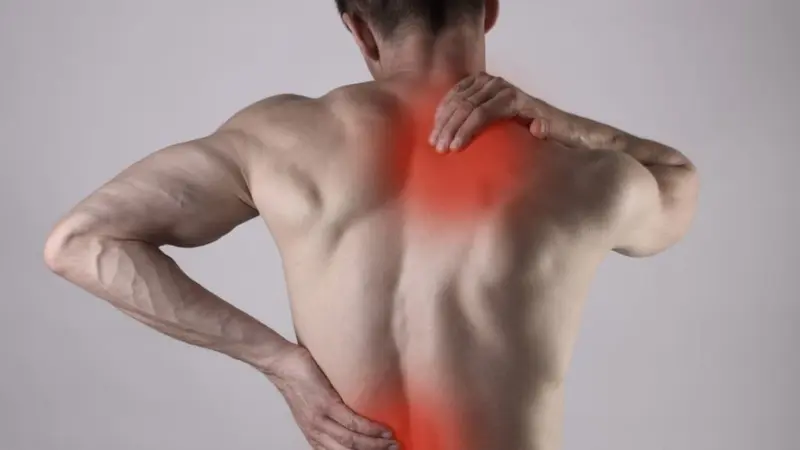Daily movement is something most people take for granted—until discomfort turns even simple tasks into a challenge. Aches during physical activity or stiffness after long rest periods can indicate that something deeper is at play. While occasional soreness may be harmless, persistent or worsening pain can signal issues in the joints, muscles, or bones that shouldn’t be ignored. Listening to your body’s warning signs is essential to avoid long-term damage or serious complications.
Pain that disrupts your usual routines, limits range of motion, or lingers despite rest may require professional evaluation. In such cases, seeking insight from an orthopedic doctor Tulsa can help identify underlying causes and explore appropriate solutions. Early intervention is key—minor discomfort can progress if left unaddressed. Understanding and responding to these symptoms with care allows individuals to maintain mobility, improve quality of life, and take steps toward recovery before the condition worsens.
Decoding Pain Signals
Pain is your body’s alarm system, signaling potential injuries and health issues. Different types of pain convey important information; for example, sharp pain may indicate an injury, whereas a dull ache might suggest inflammation or tissue stress. Pain can fluctuate based on activity, time of day, or weather, particularly in conditions like arthritis. Being mindful of when and where you experience pain and its intensity can assist healthcare providers in making accurate diagnoses. Keeping a diary of your pain patterns can improve consultations and help identify the source of the pain early, leading to more effective treatment.
Common Causes of Movement-Related Pain
Movement-related pain can have numerous causes, each requiring a unique approach for relief and recovery. Understanding what’s happening beneath the surface enables you to act quickly and appropriately:
- Muscle Strains: Repetitive movements, sudden exercise intensity, or awkward motions can lead to microtears in muscles, causing swelling and soreness. Rest, ice, and gentle stretching help, but delayed treatment may prolong recovery.
- Joint Issues: Joint pain affects both active and sedentary individuals. Conditions like osteoarthritis and rheumatoid arthritis cause cartilage wear and inflammation, leading to stiffness and reduced mobility.
- Nerve Compression: Pain may arise from nerve compression, such as herniated discs or spinal stenosis, causing radiating pain, tingling, or numbness. Timely treatment is crucial to prevent long-term issues.
- Inflammation: Overuse, trauma, or underlying diseases can cause inflammation in tendons and joints, leading to tenderness and swelling. Chronic inflammation can result in lasting damage to joints or soft tissues.
Recognizing the particular cause of your pain allows you and your health provider to design a targeted plan that promotes healing and prevents recurrence.
When to Seek Professional Help
Although many aches resolve with time and simple home care, not all pain should be managed alone. Certain warning signs indicate a need for prompt and thorough evaluation by a medical specialist:
- Pain that doesn’t improve after several days of rest or home treatment, especially if it worsens with activity.
- Sudden, intense pain that makes it difficult or impossible to walk, lift, or perform daily tasks.
- Swelling, unusual redness, or warmth around a joint or muscle may signal significant inflammation or infection.
- Sudden onset of numbness, tingling, or weakness in your arms or legs—symptoms that can signal nerve involvement and require urgent assessment.
Delaying care risks complications such as chronic pain, limited mobility, or even irreversible nerve damage. Early consultation through experienced clinics can provide advanced diagnostics and tailored therapy plans, ensuring the best possible recovery and future protection.
Preventive Measures and Management
The best defense against movement-related pain is a proactive approach that combines safe practices, regular conditioning, and mindfulness. Here’s how you can reduce your risk and manage discomfort efficiently:
- Proper Warm-Up: Never skip your warm-up. Gentle stretching, joint mobilization, and light aerobic activity prepare your muscles and joints. Increased blood flow improves flexibility, reducing the chance of muscle pulls and joint injuries.
- Strength Training: Strengthening your muscles—especially your core, lower back, and legs—helps support and stabilize joints, making them less vulnerable to everyday stresses and acute injuries. A balanced program targets all key areas and includes flexible work as well.
- Ergonomic Practices: Pay attention to posture and body mechanics at work, at home, and during exercise. Use supportive chairs, ergonomic tools, and footwear for your specific activities. Adjust your workspace to minimize strain, especially if your job involves repetitive movements or prolonged periods of sitting or standing.
- Listen to Your Body: Movement should never be painful. If you experience discomfort, don’t push through intense pain. Instead, modify activities, allow sufficient rest, and slowly build back up as you heal. Recognize the difference between healthy effort and damaging overexertion.
Understanding Chronic Pain
Chronic pain is defined as pain that lasts longer than three months, often resulting from complex interactions between injured tissues and the nervous system. This condition can lead to a heightened sensitivity known as central sensitization, where regular movements trigger excessive pain. Chronic pain not only affects physical health but also impacts sleep, mood, and daily activities.
Managing chronic pain requires a multidisciplinary approach. Physical therapists develop personalized exercise routines, while healthcare providers may prescribe medications to reduce inflammation and nerve sensitivity. Psychological counseling is also essential, as stress and anxiety can significantly exacerbate chronic pain. Key strategies for long-term recovery include pacing, relaxation techniques, and structured therapy.
